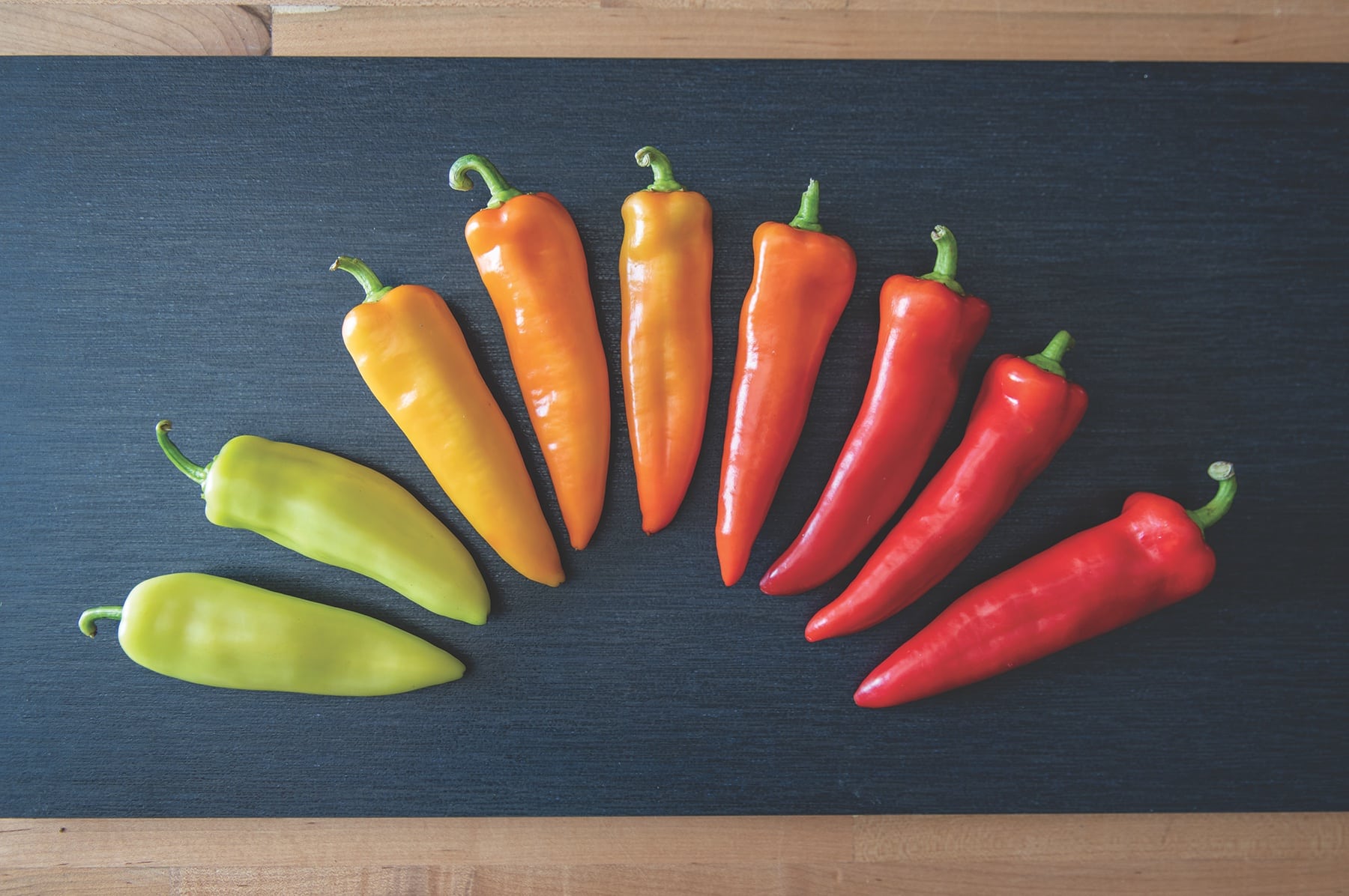After learning all about why color’s becoming a new focus in breeding, it’s important to keep one thing in mind. Though color might be a trending new breeding focus, vegetables and fruit with novelty colors and color patterns still need to be competitive and have the current market prerequisites.
Returning to butternut squash and pumpkins as an example, James Daley, pumpkin breeder & squash pre-breeder at HM Clause (HMC), explains that there are particular market standards shaped by the consumer that largely dictate the appearance of the product in terms of shape, external color and internal quality standards.”
Disease resistance and other agronomic traits are also obviously critical. In 1977, a team of agronomists from a New Zealand firm called Zespri imported kiwi seeds from China, a different species than conventional green kiwi. After years of selection, a line was created with yellow flesh in 1992.
However, cultivation of the yellow variety didn’t grow significantly due to its high susceptibility to bacteriosis, especially canker (also called Pseudomonas syringae pv. actinidiae or PSA). Indeed, an outbreak of PSA caused significant losses to Zespri’s ‘ZespriGold’ between 2010 and 2013. Zespri developed a new PSA-resistant variety called Zesy002.
Demand
Demand remains high for colored produce and it would seem that all new product launches are going to meet with market success.
“There is high demand across the board,” says ick Falconer, U.S. managing director at Rijk Zwaan USA. “I’d say it’s hard to think of a vegetable without demand for unique colors. Lettuce, spinach, watermelon, peppers, cauliflower, carrots, radish, melons, beets, tomatoes, you name it.”
But Falconer also cautions that “even with the new demand for different colors, at the end of the day [the novel products] are often a specialty and not the main driver in the crop. Breeding for niche markets can be a challenge in the business sense. Introducing novel colors is great but if they still only end up as less than 5% of the total market value, it becomes a challenge to get a return on the investment.”
Falconer notes that keeping the broad diversity in the vegetable germplasm, including genes relating to outer rind and inner flesh colors, is good for breeding, as well as for the consumer.
Trends
In terms of what’s new with colored selection, ‘medleys’ are big right now.
“You see it in radish, carrot, cherry tomato, peppers and others,” says Falconer. “These are basically mixes of different colors in the same vegetable pack.”
Lauren Giroux, Johnny’s Selected Seeds director of product selection and trialing, sees a similar trend in the market.
“There is very strong demand not just for new colors but for the most diverse colors possible in any given crop,” she says. “Carrots are a perfect example. They are almost like flowers. Not just different colors but shades of colors are now desirable. And another trend is multi colors in one individual vegetable or fruit, and/or striping. We’re seeing this in vegetables like peppers, tomatoes and melons.”
Rijk Zwaan is currently in the process of launching some novel watermelon varieties with unique color and rind patterns.
Colored tomatoes and leafy greens may have had the most success in the market because diversity of colors was also combined with different shapes and sizes compared to the regular and traditional products, according to Jacques-Yves Gueguen, global carrot manager at Vilmorin-Mikado. For example, grape and cherry tomatoes in various colors and in lettuce, Batavia and red oak leaves are currently popular.
Rijk Zwaan recently introduced a red vein arugula, which won the Best Product Promo award for the second year in a row at the U.S. Foodservice Conference.
While we don’t know what new colors may be arriving on the market in years to come, the appetite for more is likely to stay very strong among consumers. Novelty is a product characteristic that always attracts interest.
And those in the industry love color too. For her part, Giroux would like to have three to five colors in every crop type that Johnny’s offers.
“It would be my dream,” she says.
Make sure to visit part one of this story if you missed it.













